Dating Tax Class Notices
A National Cigar Museum Exclusive
© Tony Hyman
Last modified: 10-12-2009

Dating Tax Class Notices
A National Cigar Museum Exclusive
© Tony Hyman
Last modified: 10-12-2009
Tax Class Paid Notices
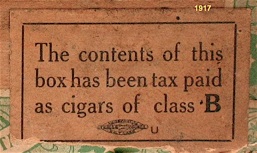
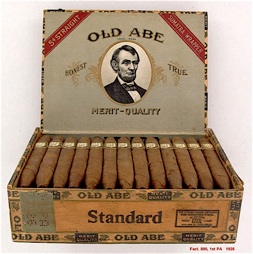
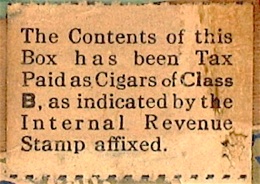
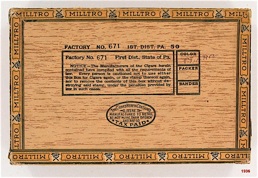
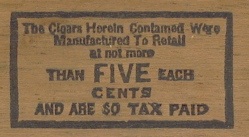
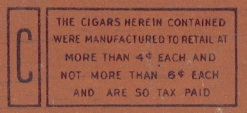

Federal tax laws required all cigar boxes made in the U.S. to have:
[1] tax stamps (1863-1959),
[2] factory I.D.’s (1866-1960’s),
[3] caution notices (1868-1959)
[4] tax class notices (1917-1970’s)
Tax Class Notices can be some help in dating.

After 1917 a Tax Class Notice is required to be on the front or bottom of every box for the next 40 years. There’s no easier way to tell at a glance whether a box is before 1917 or after 1917.
Golden Age boxes don’t have tax paid notices.
Machine age (1917-1959) boxes do.
Modern (after 1960) boxes don’t.
OLD ABE is a very typical 1920’s box. You can see the Tax Class A Notice on the right and the orange on blue tax stamp (1917-1942) on the left. Front or bottom, if there’s a Tax Class Notice on the box it can’t date before 1917. If the Tax Class Notice does not mention the price of the cigars, it dates 1917-1918. If the Notice gives a range of selling prices, it dates 1919 - 1980’s.
1917
• On the front, nearly always pasted
• Nickel cigars were Class A
• Dime cigars were Class C
• Retail price of cigars not given
• No mention of tax stamp
• Rarest form
1917 & 1918
• On the front, usually pasted
• Nickel cigars were Class A
• Dime cigars were Class C
• Retail price of cigars not given
• Standard wording of early Tax Class Notice
1919 to 1942
• On front or bottom, usually printed
• Five classes: A,B,C,D,E
• Nickel cigars were Class A
• Dime cigars were Class C
•Cuban cigars were Class E
•Most common tax class
1920’s & 1930’s
• Fairly typical bottom of a Machine Age box
• Most boxes are Class A
• Oval Tax Class Notice was legal but scarce
• Standardized CN printed on the box
• Three-line ID replaced by a single line
• Factory, state and tax district still also in CN
Optional color, packer and bander info assisted
in quality control in a few large companies.
1942 to the mid 1950’s
• Usually printed on bottom
• Seven classes: A,B,C,D,E,F,G
• Nickel cigars were Class C
• Dime cigars were Class E
• Cuban cigars were Class G

Late 1950’s
• Printed on bottom
• Seven classes: A,B,C,D,E,F,G
This was found on an 1957 box but the exact years of use for this wording are uncertain (probably 1956-1962)
Mid 1970’s
• Printed on bottom
• Seven classes: A,B,C,D,E,F,G
This was on an 1976 WHITE OWL Centennial box and indicates the cigars weren’t made in the U.S.